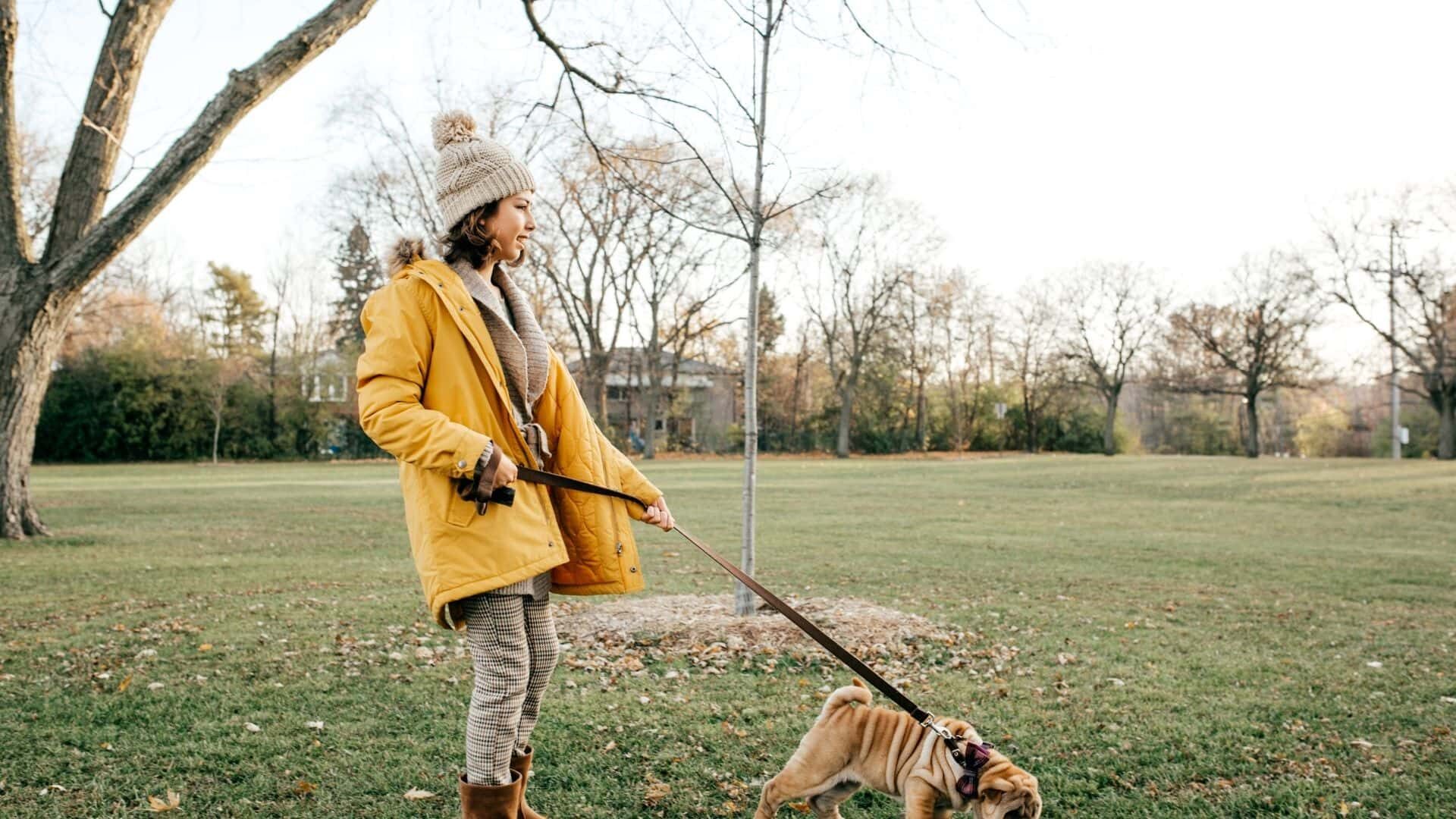Taking your dog for a walk quickly becomes a part of your daily routine when you own a dog. You might want to switch things up a bit by removing Rover’s leash and allowing them to roam more freely.
As we all know, dogs thrive when they are free to run, play, and explore their surroundings without the constraints of a leash. Allowing your dog to run off-leash, on the other hand, can be dangerous for both your dog and your community. In general, unless you are in an enclosed area, letting your dog off the leash is not a good idea.
There is no universally applicable law requiring dogs to be leashed in all public places. However, certain areas of your neighborhood, such as children’s play areas, sports fields, roads, parks, and beaches, require you to keep your dog on a leash.
Numerous local governments have enacted Public Spaces Protection Orders in recent years, requiring dogs to be walked on a leash (or to be excluded entirely) in certain public spaces. Keep an eye out for signs informing you of the restrictions. Additionally, we recommend that you consult the website of your local council for information on any restricted areas.
In the majority of parks and wooded areas throughout the United Kingdom, off-leash dog walking is permitted. There are, however, some exceptions: dogs must always be leashed near roadways. You can read the details provided below to learn more about where off-lead dog walking is permitted and where it is not.
Is it legal to walk a dog without a leash?

In fact, most places make it illegal to walk a dog without a leash! Different leash laws may apply depending on your location; they vary by state, country, and even town. As you might expect, dog leash laws can be quite complicated.
Numerous local governments have enacted Public Spaces Protection Orders in recent years, requiring dogs to be walked on a leash (or to be excluded entirely) in certain public spaces.
Is it against the law to walk your dog off-leash?
Rather than that, as with many other areas of the law, it depends. Even if a state does not require owners to keep their dogs on a leash when they leave their premises, the law may provide for the impoundment of “at-large” dogs. When a dog is unaccompanied or not on a leash when it leaves the owner’s property, it is considered to be at large.
The purpose of this law is to safeguard the public’s health and safety, as well as the health and safety of your pet. The use of leash benefits you, your neighborhood, and your pet. Numerous reasons exist for keeping your dog on a leash. Leash walking your pet helps to keep disease at bay.
5 Things you should know about dog leash law
Even if your dog is the sweetest boy ever, he must be leashed whenever you take a walk or visit a park. If they are not, you may face stiff penalties. We’ve compiled a list of four facts about leash laws that you should be aware of in order to keep you and your dog on the right side of the law.
1. Leash laws vary by jurisdiction
When it comes to you, your dog, and leashes, the law of the land applies in its entirety. In fact, most places make it illegal to walk a dog without a leash!
Different leash laws may apply depending on your location; they vary by state, country, and even town.
As you might expect, dog leash laws can be quite complicated. What if the leash laws in your county differ from those in your city? What if your municipality permits off-leash dogs but you’re in a state-funded park? While out for a morning walk with your dog, you may come across areas with different leash laws!
2. The majority of states have laws prohibiting “running at large.”
Believe it or not, the majority of state-level “leash laws” aren’t actually leash laws at all. They are referred to as “statutes that run at large.”
When a dog (or another type of animal) runs (or roams) at large, the following occurs:
- Away from the proprietor’s premises
- Without restraint (meaning not in a fenced-in area, car, crate, etc.)
- Not subject to “restraint or direct control by the owner or his agent”
The penalties for dogs that are caught running at large vary by state, just as the laws do. Do you want to learn more about the leash laws in your state?
3. The vast majority of leash laws are enacted locally
In states without large statutes, local governments such as cities, counties, towns, boroughs, districts, and municipalities define and enforce leash laws.
Even in cases where the state has defined running at large statutes, the state will sometimes allow local governments to enact leash laws.
Local leash laws are frequently stricter than state leash laws, and you should be aware of them as a dog owner. If you are unsure of your area’s leash laws, contact your local government!
4. There are exceptions to leash laws
Even if your dog is the best behaved in the neighborhood, leash laws remain in effect. However, there are a few exceptions to the rule.
In some states, leashed dogs are not required if they are “engaged in lawful hunting, exhibition, or field training.” Certain states exempt working, hunting, and guard dogs from leash laws. To add to the confusion, some states require leashes only in specific parks or wildlife areas, or between sunset and sunrise.
As always, become familiar with state and local leash laws and contact your local government if you’re unsure which rules apply were.
Where can you walk your dog off lead?

If you own a dog, walking it quickly becomes a part of your daily routine. Occasionally, you’ll want to shake things up by untethering Rover and allowing them to roam more freely. This is not always permitted, so we’ve compiled a list of places in Australia where you can and cannot walk your dog off-leash.
Local councils are responsible for enforcing dog ownership laws and defining your responsibilities as an owner, which vary considerably across Australia.
If you are unsure whether you can let your dog off-leash, your dog does not respond to commands – particularly when excited – or your dog may intimidate people or other dogs, keep them on a leash. You must maintain control of your dog while they are off-leash, and you should always keep their leash on hand in case of an emergency.
Sydney
In Sydney, there are a number of parks and public spaces where you can let your dog run free. They are all clearly marked and equipped with dog wash stations. Dogs are not permitted on playgrounds, school grounds, or sports fields, unless otherwise posted.
Melbourne
In and around Melbourne, there are 38 acres of off-leash parkland where you can take your dog. Otherwise, you must always keep your dog on a leash no longer than three meters in length, including when near playgrounds, barbecue areas, or water features.
Brisbane
Keep your dog on a leash in public places unless it is in a fenced off-leash area. Brisbane has over 135 off-leash areas, some of which are only for small dogs.
Canberra
While much of Canberra has off-leash areas, you must keep your dog on a leash on shared paths. Additionally, there are numerous fenced dog parks to visit, each with a separate area for small and large dogs.
Dogs are permitted to swim in the waters of Canberra as long as they are not in close proximity to any designated swimming areas. Sports fields are acceptable as long as they are not being used for events.
Adelaide
Adelaide has a map that indicates where dogs are permitted to roam free, but they must remain on a leash within 50 meters of playgrounds, sporting events, and permanent barbecues. Additionally, some reserves allow dogs to be off-leash during designated hours; check the signage or contact the council to confirm these hours.
Perth
VetWest’s comprehensive list of off-leash areas in Perth includes every location where you can walk your dog off-leash in the city.
Apart from that
Local parks and beaches typically have prominent signage indicating whether dogs are permitted to be off-leash or on. If in doubt, contact the local council or search for the location on Doggo, which will provide you with a good idea of what is permitted in the area.
Dog attacks and penalties for dog owners
Dog Owners’ Liability for Dog Attacks, Bites, and Other Injuries:
Dog owners are legally required to keep their pets away from people and property. Therefore, if a dog injures someone, the owner may be liable for medical expenses, lost wages, and pain and suffering. Even if the injury occurs off the owner’s property, the owner’s liability insurance (which is typically a homeowners’ or renters’ policy) may cover the cost.
Civil Liability in a Nutshell
A dog owner may be held liable in a civil lawsuit for a bite or other type of injury caused by the animal if one (or more) of the following conditions are met:
A statute prohibiting dog bites is in effect. The majority of states have enacted “strict liability dog bite laws,” which hold owners financially liable for dog bites (and other injuries in some states), regardless of their negligence or the dog’s history.
The victim may establish that the owner was aware of the dog’s proclivity for inflicting such injuries. In states without strict liability dog bite laws, owners may be held liable under the “one-bite rule,” which holds dog owners liable for injuries if they knew or should have known their dogs were likely to injure someone.
The victim can establish that the injury occurred as a result of the dog owner’s negligence (legalese for “reasonably careless”) behavior, such as violating a local leash law or leaving a gate open, which allowed the dog to escape and bite the mail carrier.
If dog owners can establish one of the legal defenses available for dog bites and other injuries, they may be able to absolve themselves of some or all liability for the victims’ injuries.
Even in states with strict liability dog bite statutes, those statutes are frequently inapplicable if the victim provoked the dog or was in trespassing at the time of the injury. Additionally, when a victim of a dog bite is partially to blame, state laws generally limit or eliminate the owner’s liability.
How about criminal liability of walk a dog without a lead?
In most states, courts may order owners to take additional precautions if their dogs have injured or threatened someone (and similar ordinances in many cities and counties). If the judge believes the dog poses a serious risk of harm, he or she may even order the dog’s euthanasia. Owners who violate the restrictions may face criminal prosecution.
In rare instances where dogs kill people as a result of their owners’ reckless or deliberate actions, authorities may charge owners with manslaughter or a similar crime. A state may have a distinct criminal law governing serious dog attacks. In Florida, for example, the owner of a dog that causes serious injury or death may face criminal charges if the owner was aware of the animal’s danger but recklessly ignored it.
How to control your dog in your house or someone else’s house according to UK laws?
Controlling your dog in accordance with UK law at home or on someone else’s property
Allowing your dog to run amok is against the law on both private and public property. If your dog bites someone who has no legal right to be in your home, such as a burglar, there is an exception.
You must ensure that your dog does not pose a threat to delivery drivers, postal workers, health care professionals, or other professionals who may visit your property.
Even if a dog does not bite or physically injure someone, an offense can occur. Even if a person believes your dog is dangerously out of control, he or she may still be classified as ‘dangerously out of control.’ This is true for dogs of all sizes, breeds, and types.
We strongly advise you to educate yourself on canine body language in order to recognize when your dog is uncomfortable in a domestic situation.
What if I violate this law?
If a dog attacks a person in their home, including their front and back gardens, or on private property, such as a pub, the owner may face criminal charges.
The Dangerous Dogs Act of 1991 is amended by sections 106 and 107 of the Anti-social Behavior, Crime, and Policing Act of 2014.
Dog barking laws

It is natural for dogs to bark occasionally. They can, however, become a noisy nuisance to your neighbors if they bark excessively for an extended period of time.
When dogs bark incessantly, it is usually because they are distressed. Typical reasons include the following:
- Being alone for an extended period of time at home
- Desiring notice
- Being preoccupied with something.
We recommend contacting a qualified behaviorist to assist you in identifying and resolving the underlying issue.
What if I violate this law?
Barking dogs are a “statutory annoyance.” The environmental health department of your local government can make a formal request that you stop your dog’s behavior, and if you do not, they can take your dog away from you. Additionally, prolonged barking can be stressful for your dog and have a negative effect on their well-being.
1990 Environmental Protection Act
What are the rules of walking your dog on road?
If you own a dog in a city, you’re probably familiar with the dos and don’ts of street dog walking. Perhaps you’ve been irritated by other dog owners’ poor manners, or perhaps you know someone who could benefit from learning how to walk a dog responsibly – and how not to. For the convenience of everyone, here is a handy list of road rules for people who walk their dogs on the road.
1. Obey all traffic signs and signals
Traffic signals must be obeyed at all times. This is true whether or not you are walking a dog, but it is especially true when crossing the street with a dog.
2. Utilize crosswalks
Crosswalks are provided for the safety of pedestrians; therefore, utilize them! Jaywalking while accompanied by a rambunctious animal is a surefire recipe for disaster. At all times, keep yourself and your dog on the crosswalk, and keep an eye on the clock.
When the light turns green, avoid making a beeline for the opposite side of the road, as your dog may refuse to cooperate. Prevent your own safety, the safety of your dog, and the safety of the motorists around you by taking precautions.
3. Locate an appropriate restroom
If you’re walking your dog and he appears to be about to urinate or defecate on the sidewalk, stop him immediately. Relocate him if possible to an out-of-the-way location. When taking your dog for a walk for the first time, try to encourage him to relieve himself by providing a suitable location for him to do so. This way, he’ll be less tempted to walk on the sidewalk as you pass. Additionally, if he defecates, you must adhere to rule #4…
4. Always pick up after your dog
Always pick up after your dog. It makes no difference where he goes; if you do not own the property on which he poos, you are responsible for picking up and disposing of the waste he leaves behind.
5. Create some breathing room
When walking on sidewalks or other congested public spaces, avoid letting your dog off the leash and occupying the entire walkway with you and your dog. Consider others and create space for them.
6. Avoid crowding the wheel wells
Avoid stopping and parking your dog in wheel wells; they are designed for wheelchair and bicycle access.
7. Avoid infringing
When you come across a pleasant, open yard, your dog will naturally want to investigate. Regardless of how much fun your dog has played in another’s yard or how convenient it is for him to use the yard as a restroom rather than the sidewalk, be aware that your dog is trespassing if he is in a stranger’s yard. Never let your dog into another person’s yard without first obtaining permission.
8. Avoid cycling and dog walking at the same time
If you enjoy biking, resist the urge to mount your dog to your bike and ride while “walking” him. Even with specially designed leashes, the entire exercise poses a risk to everyone in high-traffic areas, particularly pedestrians.
9. Adhere to the rules in public areas
Allow your dog to run free in public areas, even more so if posted rules require you to keep your dog leashed. There may be leashed aggressive dogs in the area. They have every right to be there, even more so if leashed. However, in an attempt to investigate, your dog may approach too closely, resulting in a fight.
10. Be familiar with the venue’s rules
If you want to take your dog out for errands, dining, or otherwise enjoying the city, make sure you are familiar with the local rules. While many establishments in DC are dog-friendly, many others, including many restaurants, are not.
11. Obtain permission
Never approach another dog owner’s dog without their permission first. The dog may be aggressive or suffer from another issue that makes it nervous when approached by strangers.
12. Remain vigilant
If your dog is aggressive, keep an eye out for other dogs or people who may attempt to attack your dog. Additionally, even if your dog is friendly, keep in mind that not all dogs are alike. Simply because your dog enjoys meeting new people and experiencing new things does not imply that all dogs do. Certain dogs are fearful of or threatened by certain aspects of city life, so always keep rule #11 in mind.
Watch How to train your dog to walk beside you without a leash | Video
Top 5 FAQ & Answer on is it against the law to walk a dog without a lead?
Can I dispense with the leash if I am confident that my dog will remain by my side?
While your dog may be the most well-behaved dog on the planet, an off-leash dog can cause distress to other people and animals. This may even put your dog in danger. Leashes help prevent bites and fights while also demonstrating your consideration for other pets, humans, and wildlife.
Is it permissible to take my dog for a walk without using a leash?
Without the constraints of a leash, dogs enjoy running, playing, and exploring their surroundings. Allowing your dog to run off-leash, on the other hand, can be dangerous for both your dog and your community. In general, unless you are in an enclosed area, letting your dog off the leash is not a good idea.
Is it permissible for my dog to run free on my property?
When a dog is outside, it should be restrained by a leash, a fence, or some other type of enclosure. This can aid in the protection of your dog, particularly from vehicles.
Are off-leash dog areas available in parks and on beaches?
There are numerous off-leash areas throughout the city, but not all parks and beaches. Due to the fact that off-leash hours vary, it is critical to read the posted signs. If you’re in a public space that does not permit off-leash dogs, keep in mind that adults and children can be fearful of dogs; therefore, keep your dog on a leash even if there are no other dogs nearby.
Should dogs be restrained on public sidewalks?
While there is no law requiring a dog to be on a leash when using a public right of way, local governments can make an order under Section 27 of the Road Traffic Act 1988 requiring it on specific paths
Conclusion

If you own a dog, walking it quickly becomes a part of your daily routine. You might want to switch things up a bit by removing Rover’s leash and allowing them to roam more freely. In fact, most places make it illegal to walk a dog without a leash! Different leash laws may apply depending on your location; they vary by state, country, and even town.
And if you violate the law, local governments have the authority to issue these orders, as well as fines or fixed penalty notices for those who do not comply.27 of the 1988 Road Traffic Act; 27 of the 2014 Anti-social Behavior, Crime, and Policing Act.
Leash laws, on the other hand, are in place to protect you, your dog, and your community. The objective is to prevent accidents and to keep everyone safe. With no-pull harnesses, stylish collars, and comfortable dog leashes, 2 Hounds Design makes it simple to stay on the right side of the law.






